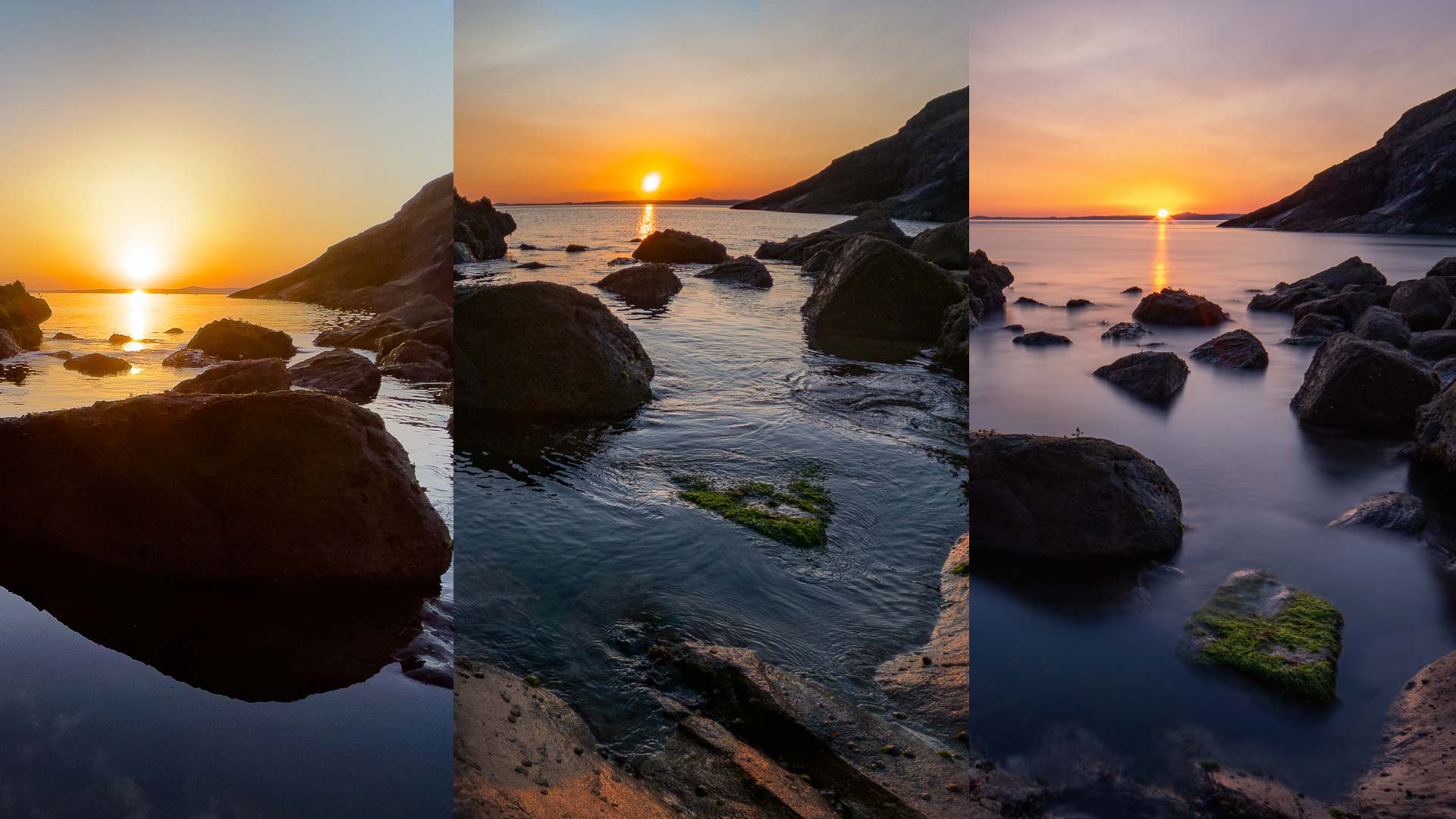
Recently I took the same image with three different cameras. So how does the GoPro, iPhone, and Panasonic LUMIX DC-S1 represent the same location in the same lighting conditions?
Before you all get yourself in a twizzle about this, I do want to point out that this is purely a bit of fun. I shouldn't have to point out that the S1 will produce the superior picture or that I'm aware of that fact. But hey, it's the internet. But what I thought would be interesting is to see just how different the images are.
Mobile devices are the primary way we view images today, and a phone screen covers a multitude of sins, not least because of its size and pixel density. Add to that the fact that sizeable portions of images are viewed on social sites like Instagram, and I'm sure you can begin to see where the problems of evaluating a shot come from.
I should point out that I took my phone and GoPro along to the S1 shoot and didn't put the same attention into their images as I did for the S1. This was because I was focused on the creative aspects of my main image. However, I did use my iPhone the previous evening to test the framing and location of the picture. I knew from the weather forecast that the light would be very similar, and the tide would be of a similar height.
For those interested, the location was Nolton Haven in Pembrokeshire in Wales in the UK. It's pretty much my adopted home away from home, and I like to spend time trying to test myself by finding angles of the bay that haven't been taken before. This summer, the shallow tides opened up a part of the beach that I had not been able to get to at this time of day until now.
So that's the back story out of the way; let's take a look at the images. I have performed adjustments and CC on these images as you would for any other image. Hence, these are not straight out of the camera, and the sun is in slightly different positions due to my experimentation with the S1 to make sure I got the shot I wanted.
GoPro vs iPhone vs S1
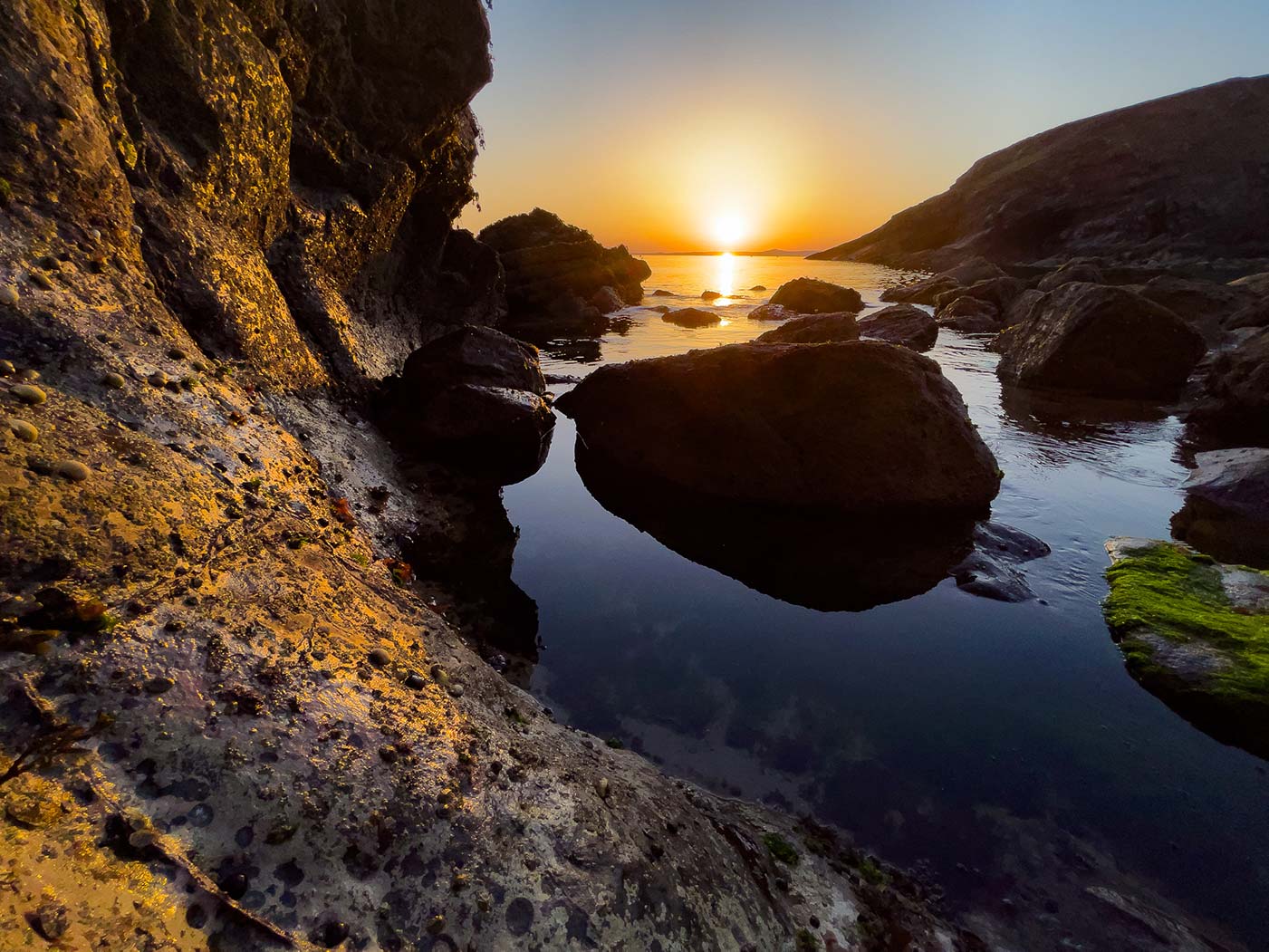
iPhone 12 Pro Max.
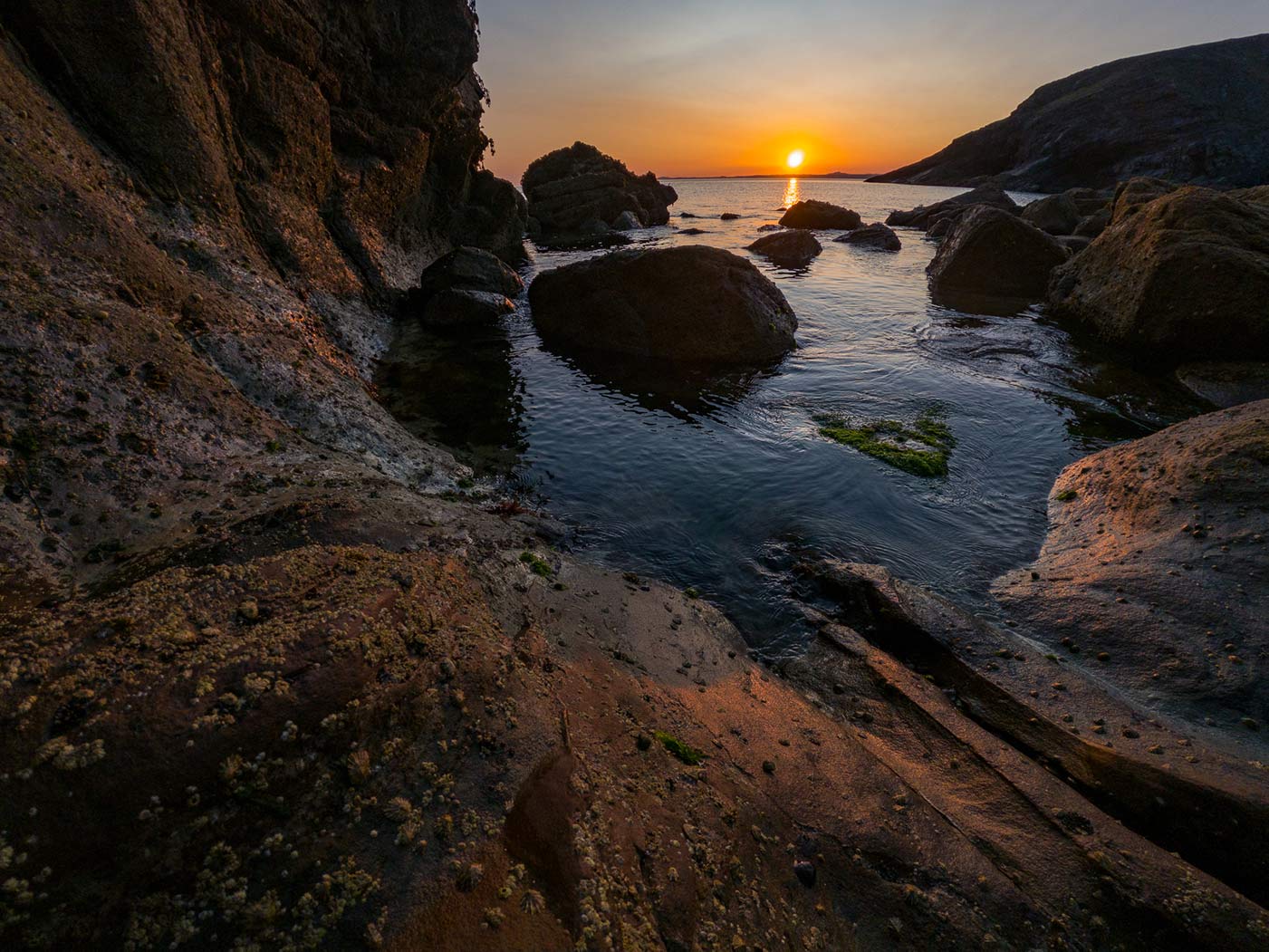
GoPro HERO9 Black.
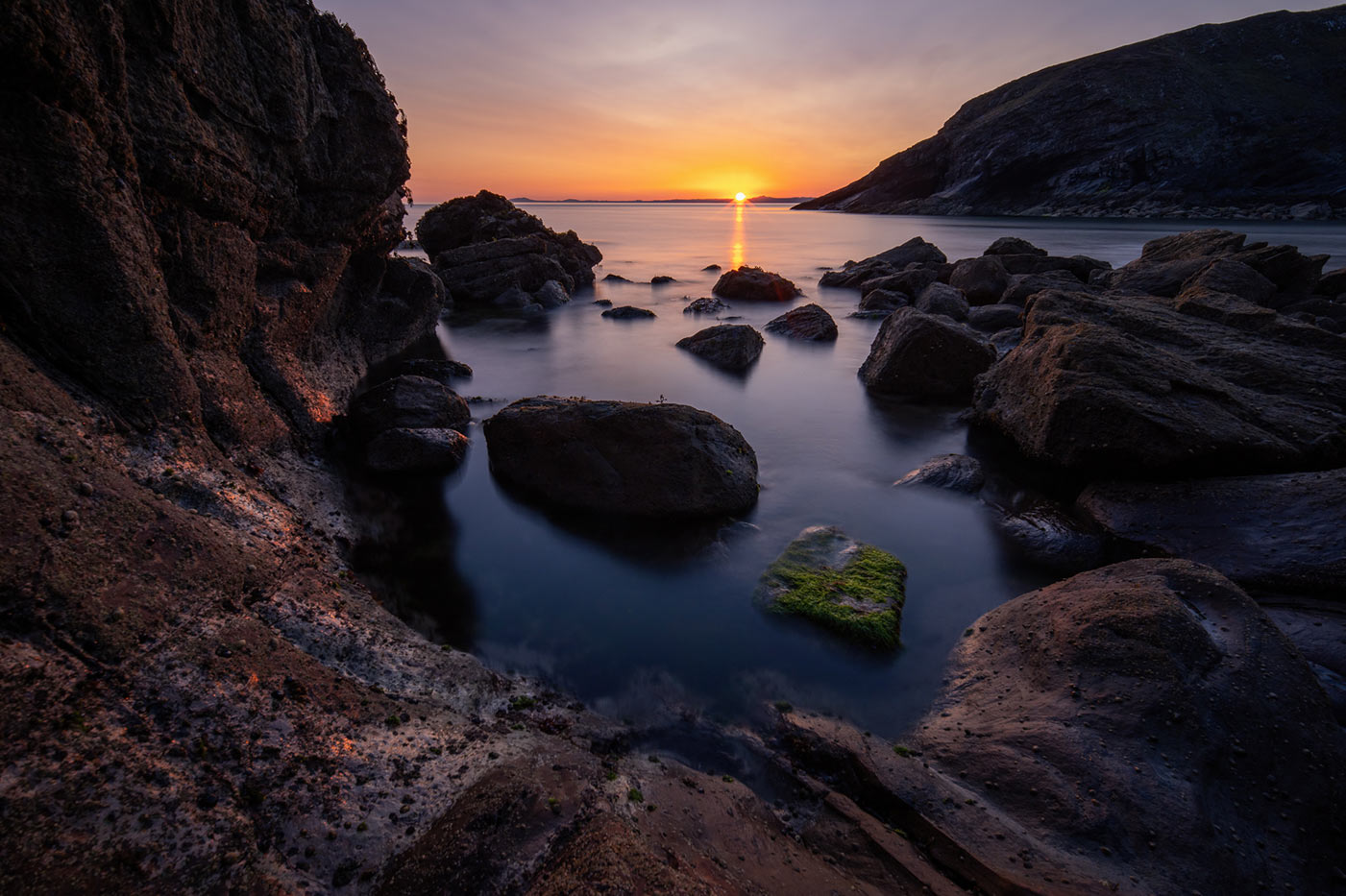
Panasonic LUMIX S1 (f/11 - Laowa 14mm f/4 Zero-D), 30 second exposure.
Analysis
The first noticeable thing is the sheer quality difference between the smaller devices and the LUMIX S1. So far, so wholly unsurprising. The quality and depth of colour on offer from the S1 are leagues ahead of the small cameras. The creative options are too, due to the dynamic range on offer and the detail in the image. There's also the starburst you get from the Laowa super-wide lens.
The more interesting comparison is between the iPhone and the GoPro HERO 9 Black. I quite often use my iPhone on walks rather than lugging around my S1. I tend to only bring out the big camera when I have a specific image in mind, such as the one above and lovely light.
I took all three images in raw form, and in the case of the iPhone, I used Halide II raw rather than ProRAW because I wanted to minimise the processing. ProRAW can produce some fantastic results, but by the same token, its noise reduction can go over the top in some circumstances, so I wanted to minimise this.
I've discussed before how good the GoPro is for photos when using raw mode. There's a really quite mind-blowing amount of dynamic range there that shouldn't really be possible for such a small camera. Yet somehow, it manages it. The HERO9 has absolutely demolished the iPhone for dynamic range and detail in the images above, even allowing for the slightly higher sun position in the iPhone image. This is borne out further when pixel peeping. The GoPro contains much more detail in the picture, while the iPhone looks a bit posterised with what seems to be overt noise reduction.
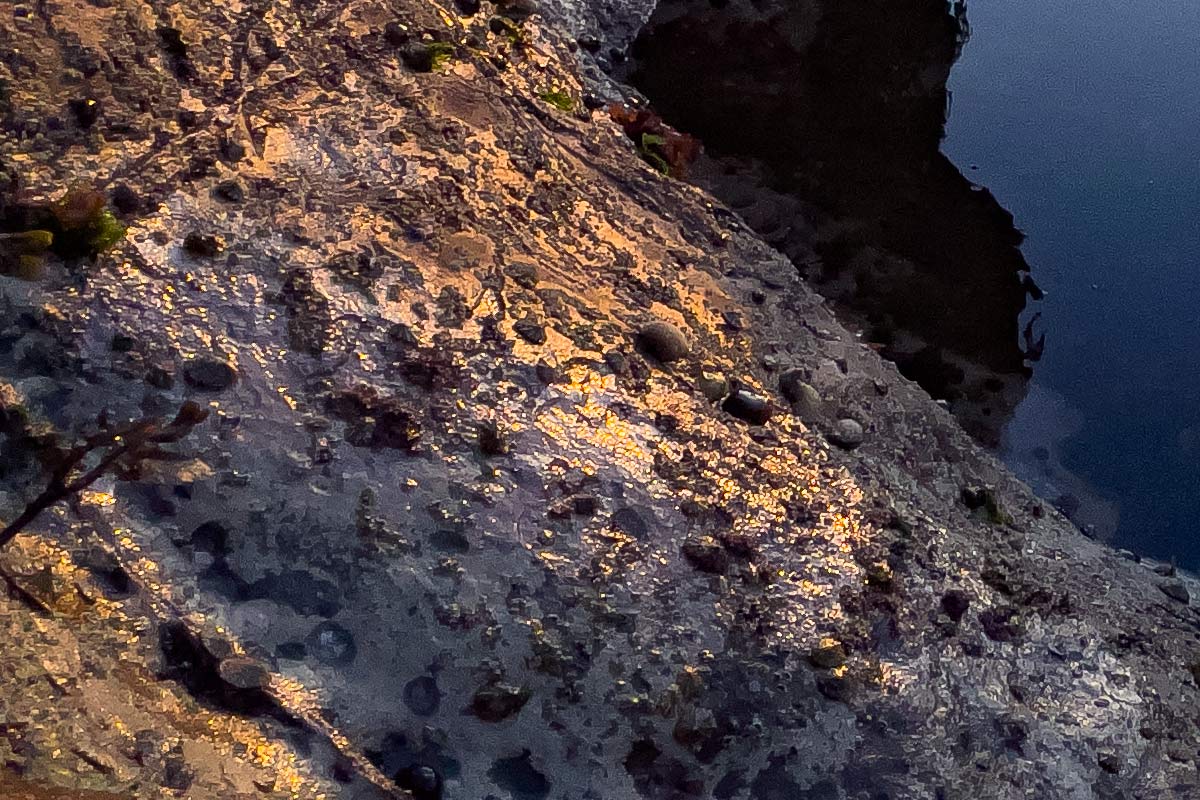
iPhone rock detail.
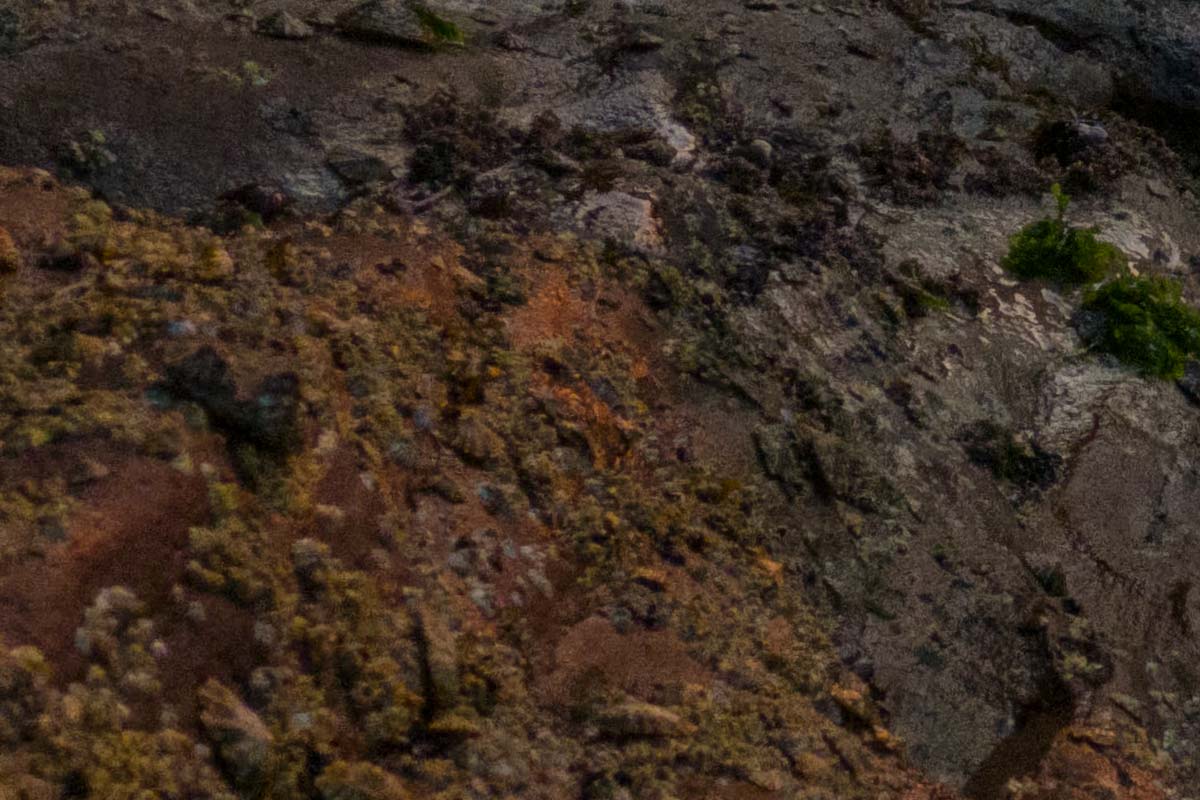
GoPro rock detail.
Most of the time, when you look at these images on a smartphone, they all look great, although the S1 is clearly superior at any size. The only difficulty with the GoPro is making sure that the horizon is level. Once you remove the distortion, you can often find that it is out by some margin, requiring some tilting and cropping to get it level again. However, the HERO9 does produce stills that are 20MP in resolution, so there's a fair amount to play with. Plus, you can take advantage of Lightroom Classic's new Super Resolution feature to double the resolution to 40MP effectively.
Whilst this experiment was only a bit of fun and won't win any awards for scientific accuracy, it does show that if you use a large camera, the differences are noticeable even on a small screen. It also affirms just how good the GoPro is as a pocketable camera for some credible landscape shots. I used a 30-second shutter on the S1 image, which gives it a much more atmosphere and ethereal look. This is also possible on both the GoPro using ND filters and the camera's Night Photo mode, which allows a long shutter time to be set, and on the iPhone using its own night photo mode, which you can force into action with the use of, yep, you've guessed it, ND filters.
The caveat to that is that with a slow shutter, you need a tripod, and if you're going to cart around a tripod, you might as well use the big camera anyway. That said if you're on a trip where you don't want to be bogged down with a heavy camera, both the iPhone and the GoPro are fantastic cameras to have with you at all times.


Comments